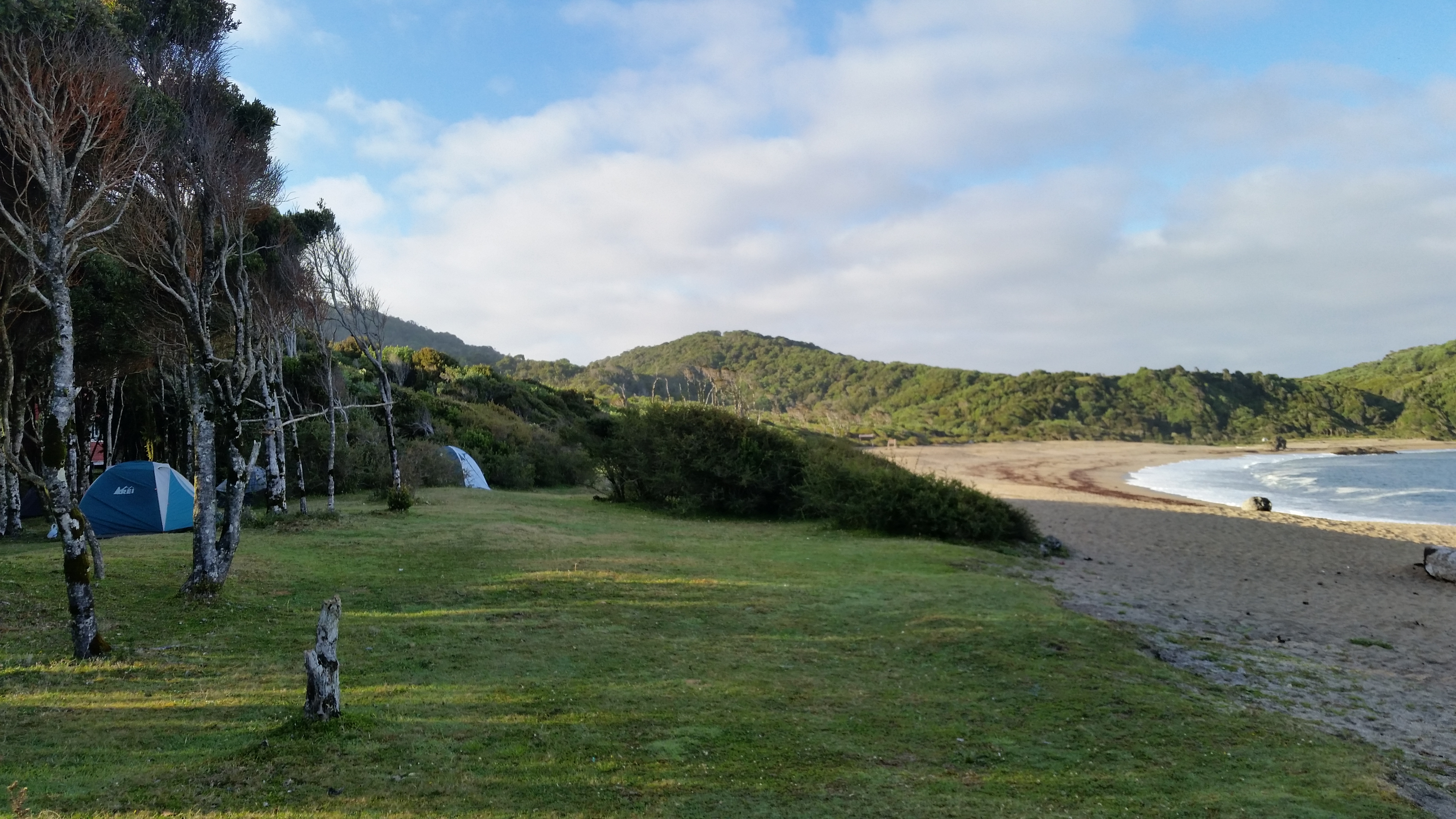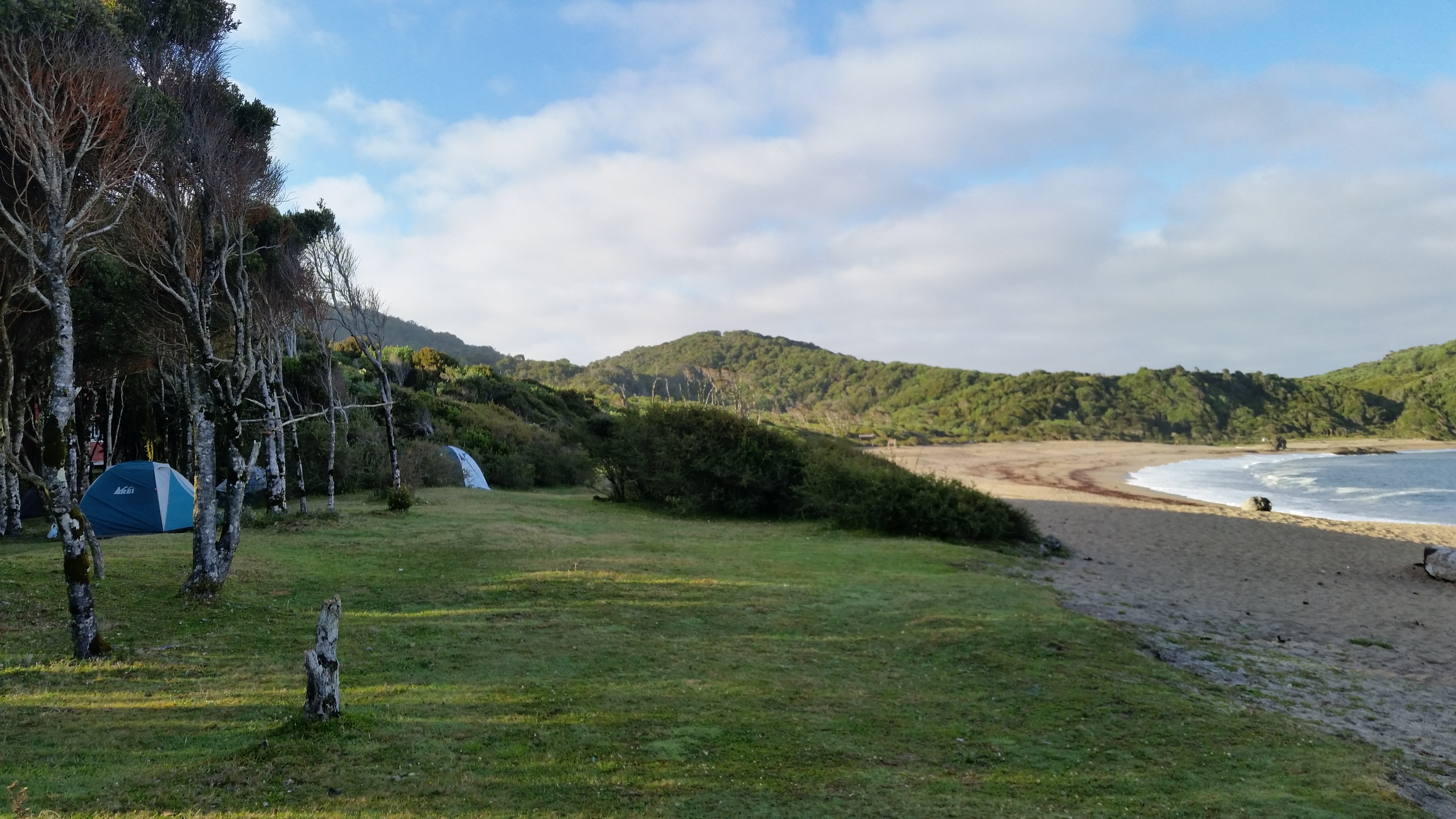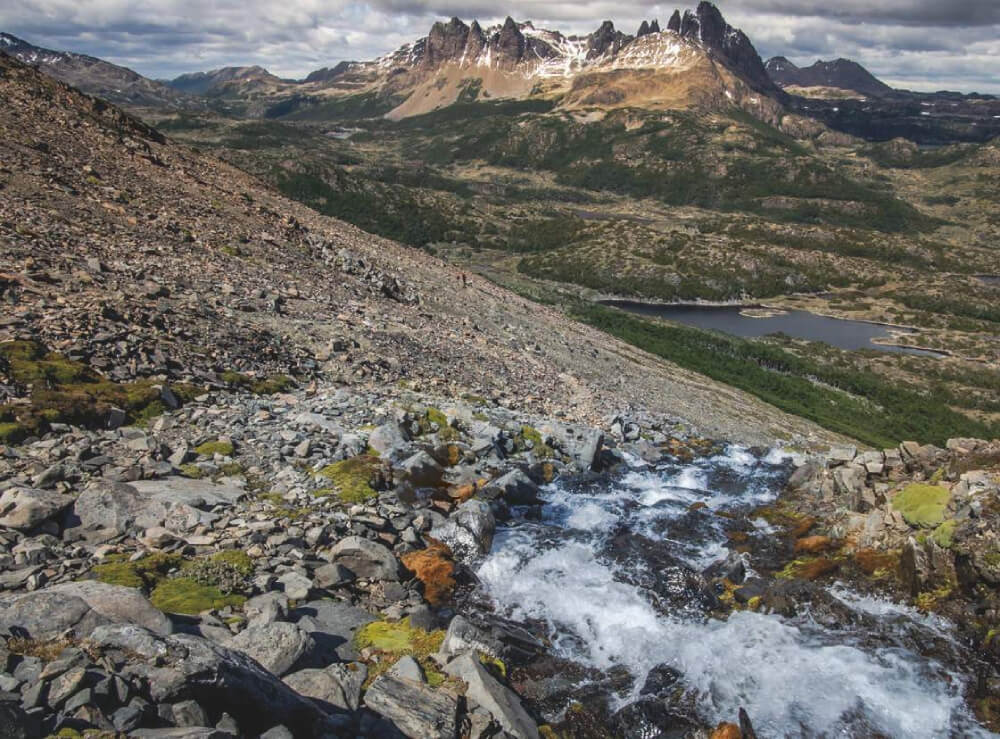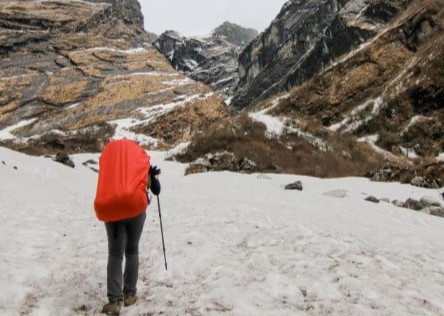Summary
General Information
Playa Cole Cole / Río Anai
Country: Chile
Region: Región de los Lagos
Area: Parque Nacional Chiloé
Nearest city: Castro
Number of journeys: 2
Total distance: 15,8km (solo ida)
Trail Markings: Esporádica
Trail: Claro y marcado
Route type: Ida y vuelta
Fauna
Cascadas / Ríos
Playas / Mar
Flora
Bosques
Panorámicas / Paisaje
Transporte público
Señal de celular
Apto para niños menores de 10 años
Difficulty:
I did it
Hiking routes
PLAYA COLE COLE / RÍO ANAI
Parque Nacional Chiloé
Author: Agustín Ferrer (CL).
Introduction
In the middle of Parque Nacional Chiloé, located on the western coast of the island, you will find one of the most beautiful beaches in Chile and probably the most beautiful in this part of the country: Cole Cole. This protected area was created by the Chilean Ministry of National Heritage in 1982. The sector was originally inhabited by indigenous people, among them the Huilliches or Veliches. Currently it is 42,567 hectares in area and living in the neighbouring areas is a community descended from that group of indigenous people who conserve and practice ancient traditions, which you can see reflected in the way that they cultivate and fish. They also spend hours making artisanal products.
The park is covered in thick Valdivian forests with species of tree such as Arrayán, Tepa, Alerce, Olivillo, Quila, Coihue and Ciprés de las Guaitecas among other native species. In some area there are Tepualia and peat bogs. It is possible that you may see diverse species of fauna such as Darwin's fox (lycalopex fulvipes), Monito del Monte (dromiciops gliroides), and the Ratón Topo de Chiloé (notiomys valdivianus chiloensis).
If you wish to get to Cole Cole, you will have to walk north through forests and along beaches. It is quite a popular route for hikers given its fame and easy access. All along the route you will be able to enjoy the spectacular views of the Pacific Ocean and the coastal valleys. Even though you could complete this route in one day, we recommend that you spend a night in Cole Cole to have enough time to enjoy your surroundings. From this beach you can also complete other hikes which lead deeper into the evergreen forest within the park. One of these, the route to Rio Anai, leads to the river through a beautiful forest.
Appropriate season
All year around.
Access
Public Transport
From Castro Bus Terminal, take a bus for CLP$1500 (approx. USD$3) towards the sector of Cucao where you will find the Conaf offices. The buses leave every 30 minutes and the journey takes around 2 hours. The last return bus from Cucao leaves at 20:00.
In Cucao, after having registered at the visitors’ centre for the Parque Nacional Chiloé (for sector Chanquín) return to the road and continue north. After 2km you will reach the Chanquín Bridge. After 5km the road end. To this point you can go on foot or in public transport from Cucao, costing CLP$700 (approx. USD$1).
Private Transport
Take route CH-5 heading south for 24km along a paved road until coming to Notuco crossing, where you should take the turning to the right (southwest) to Huillinco/Cucao. From here continue along route W80 for 35km to the village of Cucao. On the other side of the bridge over the River Desaguadero, also known as River Cucao, is the main entrance to Parque Nacional Chiloé.
Continue for 5km until the end of the road. You can leave the car safely in a turning on the right by a small lake. Only fishermen and locals from Huentemó can park on the beach.
Permits / Prices
You will need to pay in the Conaf office in Cucao. The entry fees to the park are as follows: Chilean adult CLP$1500 (approx. US$3), Chilean child CLP$7500 (approx. US$1.50), foreign adult CLP$3000 (approx. US$6), foreign child CLP$1500 (approx. US$3), Chilean pensioner CLP$750 (approx. USD$1.50) and foreign pensioner CLP$1500 (approx. US$3).
Furthermore you must pay a fee of CLP$1000 (approx. USD$2) per person to enter the land belonging to the Huentemó community.
Accommodation / Facilities
In Cucao and Chanquín you can find various options such as campsites, B&Bs, lodges and hotels. There is also a campsite in Huentemó. In Cole Cole there is a Conaf refuge for up to 15 people; on the ground floor there is a toilet and a large dining table. The upper floor has two open rooms with bunkbeds. Beside the refuge there are areas to camp with tables, areas for fires and a bathroom (toilet and shower). Camping costs CLP$2000 (approx. USD$4) per person and the refuge costs CLP$4000 (approx. USD$8) per person.
Recommendations
- You can also visit Cole Cole beach for the day.
Gear
- Camping gear (stove, gas, pans and cutlery, food, etc.)
- Warm clothing for camping.
- Head torch.
- Sun-glasses, sun protection, first-aid kit, insect repellent.
- Swimwear, flip flops.
Schedule
Normal Itinerary
- Castro – Cole Cole Beach
- Cole Cole Beach / Río Anai – Castro
Alternative Itinerary
- Castro – Cole Cole Beach
- Playa Cole Cole / Río Anai
- Rio Anai – Castro
Comments
Playa Cole Cole / Río Anai
Macarena Díaz Herrera 16/02/2022
Fecha expedición: 03/02/2022
Preciosa ruta! Y la playa espectacular. Subió un poco el precio para el acceso y el camping, ahora están ambos a $2000. La administración ya no es de CONAF, sino de las comunidades mapuches. El baño está hecho un asco, inutilizable. La pasarela hacia el sendero del río Anay ya no existe, por lo que hay que cruzar en balsa guiándose por un cordel. Hay pocos esteros con agua potable, nosotros conseguimos con las comunidades que habitan por ahí.
Independiente de eso, el sendero es precioso, y la recompensa de llegar a la playa, aún más! Hay que ir preparado, pero se recomienda full!
Agustín HB 26/02/2017
Punto alcanzado: Playa Cole Cole
Fecha expedición: 25/02/2017
Excelente trekking para llegar a la bella playa de cole cole. Los valores siguen siendo los mismos, $1.000 para utilizar el sendero cobrado por la comunidad indígena y otro $1.000 por persona para acampar ($2.000 si se quiere dormir en el refugio). El único pero, el descuido del lugar por parte de los turistas.. Aun no entienden que la basura no regresa sola! Llevala de vuelta a tu casa! (la dejan hasta colgada como si bonito se viera. Y lo otro que los baños si bien funcionan se debe hacer todo un procedimiento para llenar el estanque (duchas no hay, y tampoco venden alimentos por lo que se debe llevar todo).
Agustín HB 26/02/2017
Punto alcanzado: Playa Cole Cole
Fecha expedición: 25/02/2017
Excelente trekking para llegar a la bella playa de cole cole. Los valores siguen siendo los mismos, $1.000 para utilizar el sendero cobrado por la comunidad indígena y otro $1.000 por persona para acampar ($2.000 si se quiere dormir en el refugio). El único pero, el descuido del lugar por parte de los turistas.. Aun no entienden que la basura no regresa sola! Llevala de vuelta a tu casa! (la dejan hasta colgada como si bonito se viera. Y lo otro que los baños si bien funcionan se debe hacer todo un procedimiento para llenar el estanque (duchas no hay, y tampoco venden alimentos por lo que se debe llevar todo).
Agustín Ferrer 07/05/2015
Punto alcanzado: Río Anai
Fecha expedición: 06/02/2015
Excelente recorrido a una de las playas más hermosas de Chiloé. Llegar a esta no es exigente y recomiendo quedarse más días en Cole Cole para disfrutar todo su entorno. Actualmente el sendero hasta río Anay no está habilitado por lo que un gps ayuda mucho (descargar el track); las marcas de los pescadores pueden no ser suficientes. Debido a la gran sequía que hubo este verano, existía gran dificultad para encontrar agua dulce por lo que los baños no estaba funcionando con normalidad. Sin embargo, es posible encontrar más al norte, pasado la pasarela donde hay escorrentía casi permanente.





















I did it!